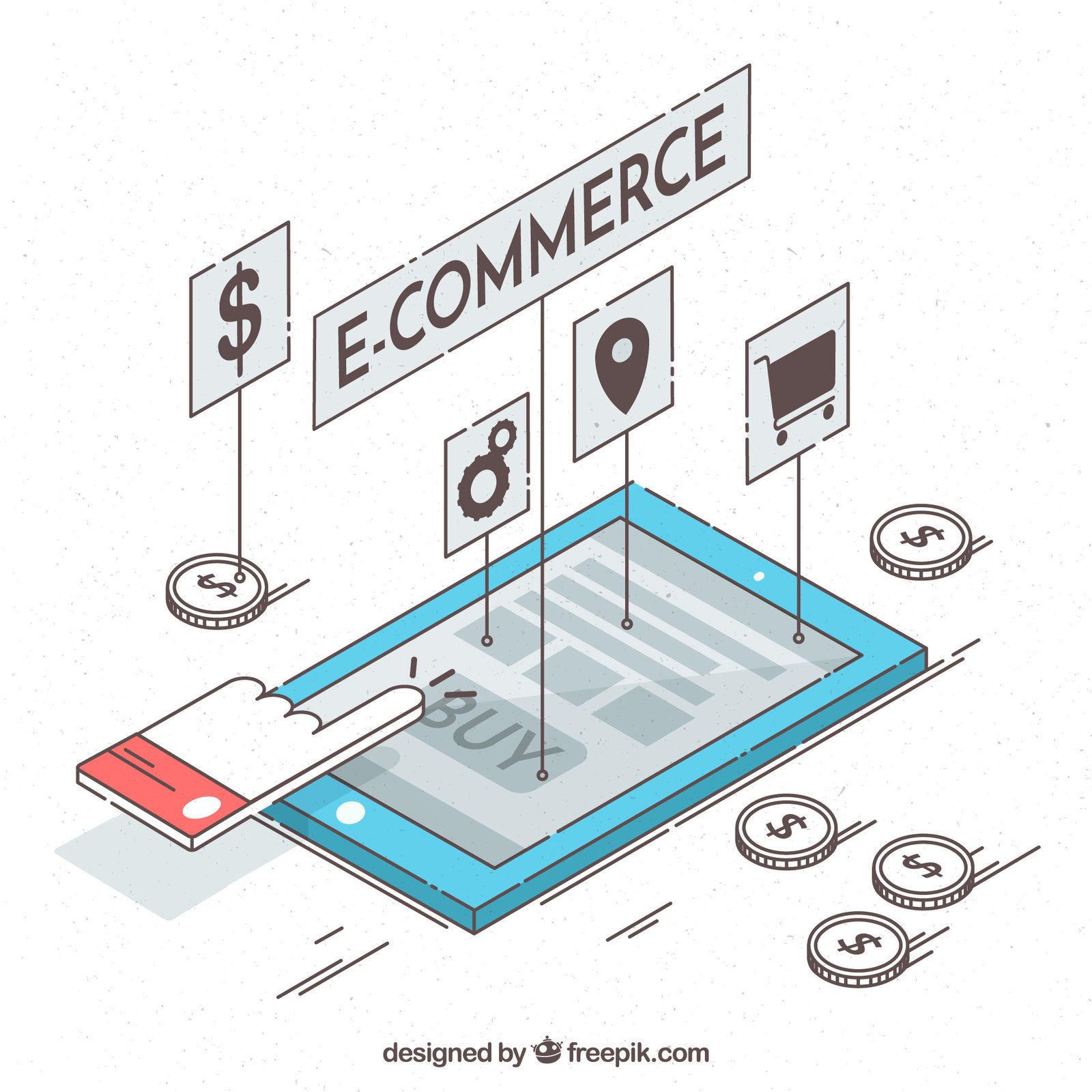E-commerce development is pivotal in the contemporary business landscape, providing a crucial avenue for companies to conduct transactions and connect with a global audience. Its significance lies in offering streamlined operations, increased market accessibility, and elevated customer interactions.
Navigating the cost considerations of e-commerce development involves critical factors such as platform choice, customization needs, functionality requirements, scalability, design costs, development team expenses, integration investments, security measures, testing, and ongoing maintenance. These elements collectively shape the financial landscape of establishing and sustaining an effective e-commerce presence.
Factors Affecting E-commerce Development Costs
E-commerce Platform Comparison:
| Feature | Shopify | Magento | WooCommerce |
| Ease of Use | Extremely user-friendly | Moderate complexity, steeper learning curve | Familiar if you’re accustomed to WordPress |
| Cost | Monthly subscription fee | Initial setup cost, potentially higher ongoing costs | Free plugin, but may incur costs for extensions |
| Customization | Limited compared to Magento | Highly customizable, tailored for large businesses | Flexible, can be extended with plugins |
| Scalability | Excellent for small to medium-sized businesses | Highly scalable, suitable for large enterprises | Good for small to medium-sized businesses |
| Hosting | Hosted solution | Requires dedicated hosting | Self-hosted, flexibility in choosing hosting providers |
| Extensions & Apps | Extensive app store | Rich marketplace for extensions | Vast library of WordPress plugins |
| Support & Community | Robust customer support | Large community and developer base | Strong community support |
| SEO Friendliness | Good SEO features | Strong SEO capabilities | SEO-friendly, especially with WordPress |
| Security | Fully managed security | Advanced security features | Relies on WordPress security measures |
Impact on Development Costs:
Impact on Development Costs Compression
| Shopify | Magento | WooCommerce |
| Lower upfront costs with a monthly subscription.Limited customization might reduce development costs but could lead to additional app expenses. | Potentially higher upfront development costs due to complexity.Long-term scalability may reduce costs as the business grows. | Initial setup costs are generally lower.Ongoing costs depend on the specific extensions and hosting chosen. |
Choosing the right platform depends on factors such as business size, customization needs, and budget considerations. Shopify offers simplicity, Magento caters to larger enterprises, while WooCommerce is a versatile option for those familiar with WordPress.
E-commerce Development Cost Factors:
E-commerce Development Cost Factors Comparison:
| Factors | Shopify | Magento | WooCommerce |
| Platform Selection | Hosted solution with monthly subscription | Self-hosted, initial setup costs, potentially higher ongoing costs | Free plugin, may have costs for extensions and hosting |
| Customization Requirements | Limited customization compared to Magento | Highly customizable, tailored for large businesses | Flexible, can be extended with plugins, customizable themes |
| Functionality and Features | Comprehensive features with an extensive app store | Rich marketplace for extensions, robust features | Vast library of WordPress plugins, features extendable |
| Scalability | Excellent for small to medium-sized businesses | Highly scalable, suitable for large enterprises | Good for small to medium-sized businesses, scalable with hosting choices |
Design and User Experience (UX) Costs
Design and User Experience (UX) Costs Comparison:
| Factors | Responsive Design | User Interface (UI) Design |
| Importance | Crucial for reaching a mobile audience, improving SEO, and enhancing user experience | Significant impact on user engagement, brand perception, and overall usability |
| Costs Associated | Often included in overall development costs, especially in platforms like Shopify | Typically involves design fees, potentially higher for complex and custom designs |
| Considerations | – Ensures consistent user experience across devices | – Focus on intuitive navigation, visual appeal, and brand alignment |
| – A necessity for SEO optimization and search engine ranking | – Consistency in design elements, typography, and color schemes | |
| – May require additional testing and optimization for various devices | – Collaboration between designers and developers for seamless integration |
Development Team Costs
Development Team Costs Comparison:
| Factors | Hiring Developers | Development Timeframe |
| Considerations | – In-house vs. outsourcing considerations | – Relationship between development time and costs |
| – In-house: Greater control, potentially higher costs | – Project complexity influences the timeline | |
| – Outsourcing: Cost savings, access to specialized skills | – Balancing speed and quality is crucial for an optimal development timeframe | |
| Costs Associated | – In-house: Higher salaries, benefits, infrastructure costs | – Longer development time may result in higher costs |
| – Outsourcing: Lower hourly rates, reduced overhead | – Quick development may require additional resources, potentially increasing costs |
Integration Costs
Integration Costs Comparison:
| Factors | Payment Gateways | Third-Party Integrations |
| Different Options | – Multiple payment gateway options available | – Integration with various tools and services possible |
| – Examples: Stripe, PayPal, Square, etc. | – Examples: CRM systems, analytics tools, marketing platforms, etc. | |
| Integration Costs | – Costs vary based on the selected payment gateway | – Costs depend on the complexity of integrations and the specific third-party tools |
| – Typically involves setup fees, transaction fees, and ongoing usage charges | – Fees may include initial setup, licensing, and ongoing support costs | |
| Considerations | – Evaluate transaction fees, currency support, and security features | – Assess the necessity and impact of third-party integrations on business processes |
| – Consider user experience and ease of implementation | – Prioritize integrations that enhance operational efficiency and user experience |
Understanding the diverse options and associated costs for payment gateways and third-party integrations is crucial for making informed decisions during the development process. Evaluating considerations such as transaction fees, security features, and the impact on user experience ensures a strategic and cost-effective integration approach.
Security Costs
Security Costs Comparison:
| Factors | SSL Certificates | Data Protection Measures |
| Importance | – Essential for secure transactions | – Crucial for ensuring the security and privacy of customer data |
| – Builds trust among users regarding data confidentiality | – Compliance with data protection regulations is a priority | |
| Costs Associated | – Cost varies based on certificate type (e.g., Domain, Extended Validation) | – Costs associated with implementing encryption, access controls, and secure storage |
| – Annual renewal fees are common | – May include costs for security audits, compliance assessments, and ongoing monitoring | |
| Considerations | – Evaluate the level of security required for the nature of transactions | – Assess the sensitivity of customer data and legal obligations for protection |
| – Assess the need for additional features like warranty or vulnerability scanning | – Balance security investments with the overall budget constraints |
Balancing the importance of secure transactions and data protection with the associated costs is vital for establishing a trustworthy and compliant e-commerce platform. Careful consideration of the specific security needs and compliance requirements will guide the allocation of resources for SSL certificates and data protection measures.
Testing and Quality Assurance Costs
Testing and Quality Assurance Costs Comparison
| Factors | Functionality Testing | Security Audits |
| Importance | – Ensures all features work as intended, improving user experience | – Essential for identifying and mitigating potential security vulnerabilities |
| – Reduces the likelihood of post-launch issues and customer dissatisfaction | – Builds trust by demonstrating a commitment to data security | |
| Costs Associated | – Involves costs related to testing tools, resources, and potentially a testing team | – Costs may include hiring external security experts or firms |
| – Automated testing tools can reduce manual testing costs | – Investment in security software and tools may be necessary | |
| Considerations | – Evaluate the scope of testing based on the complexity of the e-commerce platform | – Assess the need for periodic or one-time security audits |
| – Consider both manual and automated testing for comprehensive coverage | – Compliance requirements and industry standards may influence costs |
Balancing functionality testing and security audits is key to delivering a reliable and secure e-commerce platform. Assessing the scope, choosing appropriate testing methods, and investing in security measures align with the goal of providing a seamless and secure user experience.
Ongoing Maintenance and Support Costs:
Comparison
| Factors | Regular Updates | Customer Support |
| Importance | – Essential for addressing security vulnerabilities and ensuring compatibility | – Crucial for maintaining customer satisfaction and resolving issues |
| – Improves platform performance, adds new features, and enhances stability | – Builds trust by providing timely and effective assistance to users | |
| Costs Associated | – May include costs for development time, testing, and potential third-party plugins or extensions | – Costs vary based on the level of support (e.g., basic vs. premium) and the support channel (e.g., email, chat, phone) |
| – Some platforms may charge for updates, especially if using premium features | – Investment in customer support tools and training for support personnel | |
| Considerations | – Evaluate the need for updates based on security patches, feature releases, and compatibility | – Consider the anticipated volume of customer inquiries and the desired level of service |
| – Assess the impact of updates on customizations and third-party integrations | – Choose appropriate channels and response times based on customer expectations |
Efficient ongoing maintenance and customer support are essential for sustaining a successful e-commerce platform. Evaluating the need for regular updates, considering the impact on customizations, and investing in effective customer support contribute to the long-term success of the platform.
Conclusion:
Recap of Key Factors Influencing E-commerce Development Costs:
In the journey of e-commerce development, several pivotal factors shape the financial landscape of the endeavor. From the critical choice of an e-commerce platform and the intricacies of customization to the nuances of functionality, scalability, and security, each decision reverberates in the overall cost structure. The meticulous selection of a development team, integrations, and the ongoing commitment to testing, maintenance, and customer support further contribute to the holistic understanding of the investment required.
Encouragement to Prioritize a Well-Thought-Out Budget for Successful E-commerce Development:
As businesses embark on the path of e-commerce development, the significance of a well-thought-out budget cannot be overstated. It serves as the compass, guiding decision-making processes and ensuring a strategic allocation of resources. A comprehensive budget takes into account not only the initial development costs but also the ongoing investment required for updates, support, and the evolution of the platform.
Successful e-commerce development is not merely about creating an online presence but about establishing a resilient and customer-centric ecosystem. It’s an investment that extends beyond the visible features to encompass security, user experience, and adaptability to future needs. By prioritizing a thoughtfully crafted budget, businesses lay the foundation for a robust and sustainable e-commerce presence that not only meets current expectations but also sets the stage for future growth and success.
In essence, the journey of e-commerce development is a strategic investment, and a well-planned budget is the cornerstone that ensures this investment yields sustainable returns in the dynamic landscape of online commerce. Top of Form




